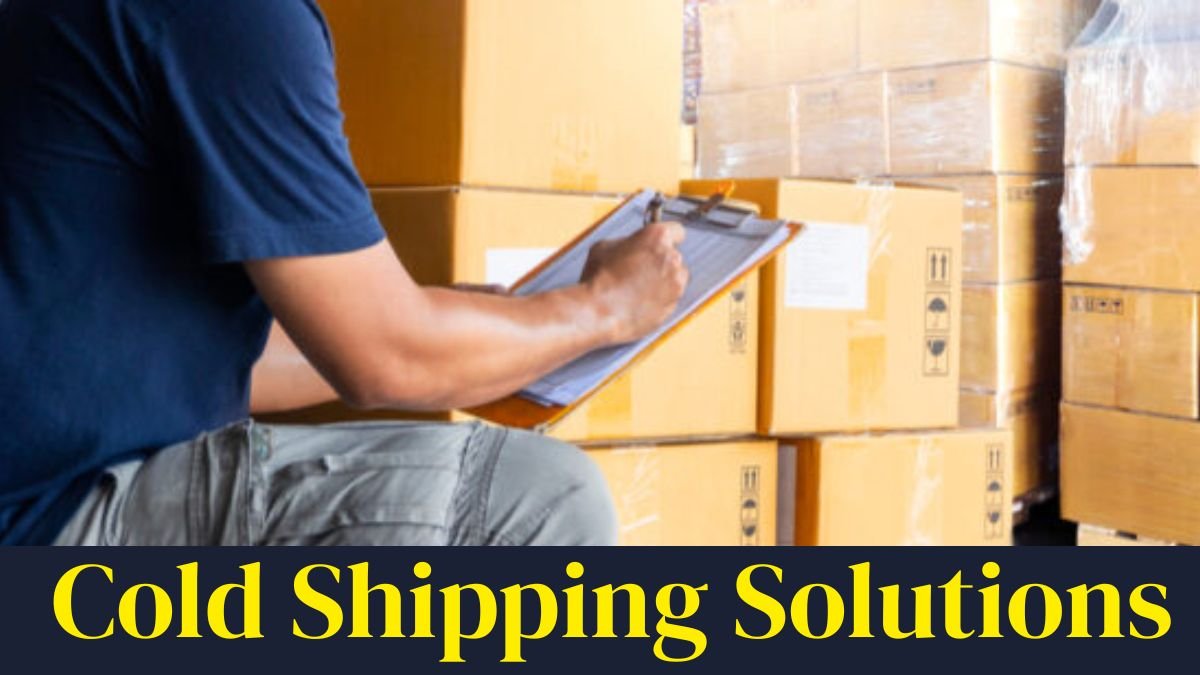For any business, the first interaction with a customer isn’t just about making a sale. The real relationship begins when you deliver the purchased product in optimal condition. This is where the customer experience truly shapes their perception and trust in your brand. Any hiccup at this initial stage can significantly impact the customer experience and potentially damage your brand reputation in the future.
Now, if your business deals with perishable or temperature-sensitive products, the challenge becomes even greater. Shipping frozen and refrigerated products involves more than just standard transportation; it requires controlled temperature and environmental conditions. In this article, we’ll explore what cold chain shipping is, the challenges involved, and how to choose the right solution for your business.
What is Cold Chain Shipping?
Cold chain shipping refers to the transportation, storage, handling, and delivery of temperature-sensitive goods. This typically includes food products, pharmaceuticals, and certain biological materials. The goal is to maintain product quality, ensuring that the product remains safe and fresh until it reaches the customer.
Equipment used in cold chain shipping includes:
- Temperature-controlled refrigerators
- Specialized warehouses and storage facilities
- Cold boxes and insulated containers
For general food products, the rule is to maintain freshness and cleanliness during delivery. For pharmaceuticals, each product category has its own specific temperature requirements.
Due to technological advancements and innovations, the demand for cold chain shipping is steadily increasing. The cold chain logistics market was valued at USD 245 billion in 2021, and it is projected to reach approximately USD 801.26 billion by 2030.
We saw this clearly during COVID-19, when the stringent temperature requirements for vaccines hindered vaccination efforts in many countries due to a lack of the necessary equipment.
Yet, many companies still shy away from cold chain shipping. There are several challenges involved, making it one of the most complex shipping methods.
Challenges of Shipping Frozen and Refrigerated Products
Shipping frozen and refrigerated products is not limited to storage and transportation. There are several other hurdles that need to be addressed:
High Costs
The cost of cold chain shipping is significantly higher than regular shipping. This is due to:
- Specialized packaging
- Need for advanced equipment
- Strict temperature and environment monitoring
- Humidity control
Furthermore, many food products and pharmaceuticals have expiration dates. To ensure safe delivery, they must be shipped as express shipments. All these measures ultimately increase shipping costs, which many businesses cannot afford.
Risk of Product Damage and Refund Claims
Frozen food and pharmaceutical products are more prone to damage during transit. This can be due to equipment malfunction or human error. The result is the same: spoiled products or refund claims.
Legally, even if the shipping container is damaged but the product is intact, you are not allowed to sell the product and the entire shipment must be destroyed.
Unacceptable Delivery Delays
Delays are sometimes unavoidable in regular shipping. But in cold chain shipping, delays mean product spoilage. Product loss is certain if there are delays due to temperature, humidity, or expiration date.
Complex Inventory Control
Storing temperature-sensitive items requires extreme care. Frozen and refrigerated products can lose quality even with minor mistakes.
Predicting inventory is also difficult. Too much stock can lead to products reaching their expiration date, while too little stock means unmet demand. This is even more critical with pharmaceuticals.
Best Practices for Cold Chain Shipping
Doing cold chain shipping right guarantees both compliance and product quality for your business. Here are some key tips:
Choose the right insulated container
Insulated boxes protect your product from external heat. Even with temperature-controlled equipment, these boxes provide added protection.
Use dry ice and frozen gel packs
Dry ice and gel packs are essential for frozen food products. If using dry ice, ensure proper ventilation in the package.
Always get shipping insurance
Cold shipping is complex. Shipping insurance provides peace of mind regarding the safety of your product. Always ensure your logistics provider offers this service.
Select a professional logistics partner
Managing all these processes while running a business can be stressful. The right logistics partner can help alleviate this burden, ensure compliance, and maintain product integrity.
How to choose the right cold storage shipping solution
Choosing a cold storage shipping solution requires careful consideration. Here are some key points:
Equipment priority
The most important factor is the right equipment. If the provider doesn’t have equipment suitable for your product, they are not the right choice.
Customized SOPs
A good provider follows Standard Operating Procedures (SOPs). This improves shipment efficiency and ensures transparency and accountability.
Technological integration
Lack of technological innovation can create problems in cold storage shipping.It can. Look for providers who use data and technology to offer better forecasting and solutions.
Cost Transparency
Cold chain shipping is expensive. Therefore, ensure the provider offers cost transparency and allows you to scale your services up or down as needed.
Secure Your Deliveries with Ziing
Cold chain shipping is complex, and the DIY (Do It Yourself) approach isn’t always effective. Packaging, temperature, and humidity—everything must be perfect.
- Ziing’s cold chain shipping solution includes:
- State-of-the-art equipment for temperature and humidity control
- Full cost transparency
Better options for scaling in the market through data and technology
If you are a business that works with frozen or refrigerated products, Ziing helps ensure the safety and quality of your product, so you can deliver fresh and safe products to your customers.
Conclusion
Cold chain shipping isn’t just an option; it’s an essential requirement for businesses that sell frozen and temperature-sensitive products. Despite the high costs, complexity, and risks, the process can be simplified and made safer with the right equipment, SOPs, technological innovations, and a professional logistics partner. Customer satisfaction is the top priority for any business, and with cold chain shipping, you can ensure your products always arrive safely, fresh, and on time.

